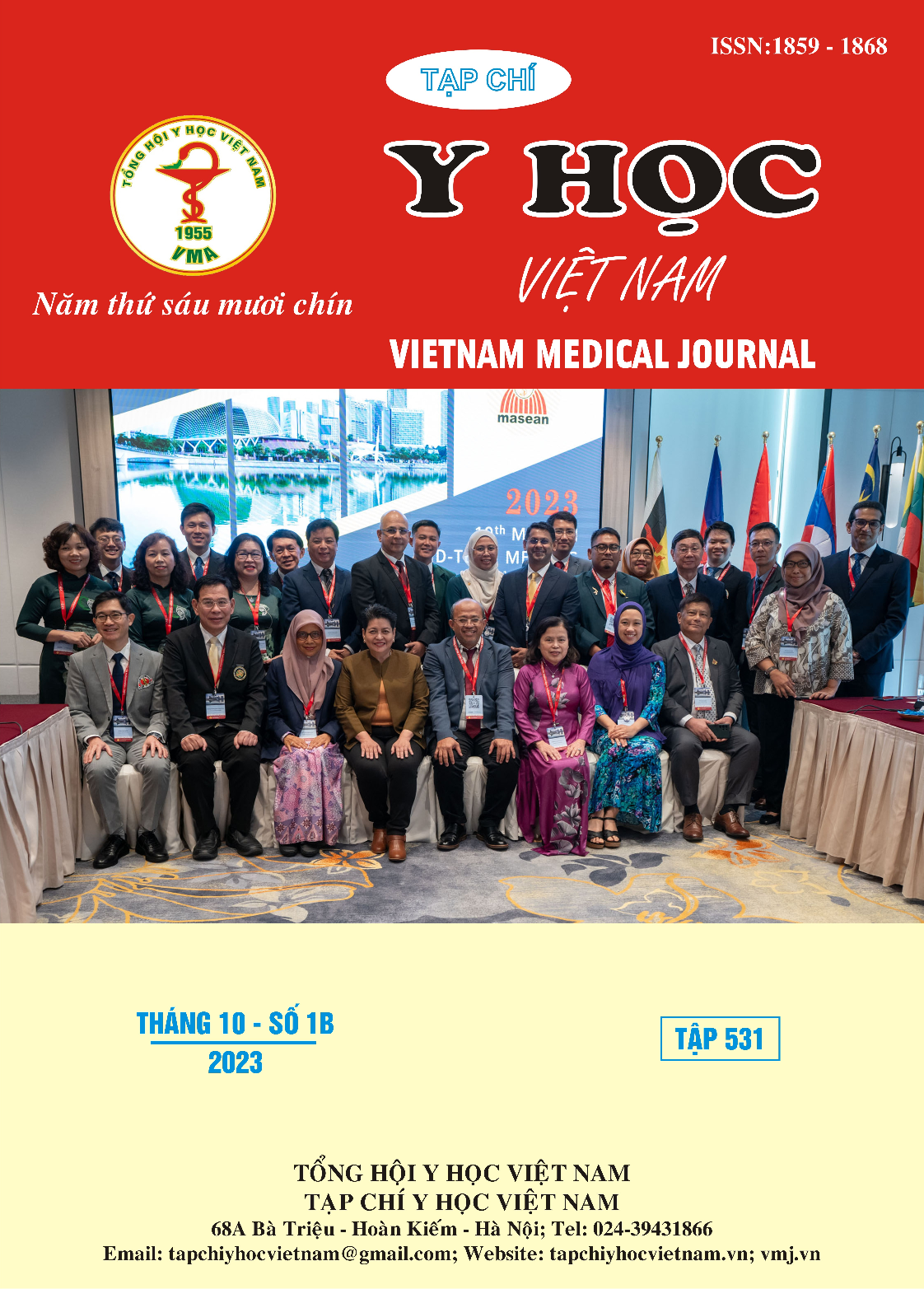EMBRYO MOSAIC: SOME FACTORS RELATED TO THE MOSAICISM IN BLASTOCYSTS
Main Article Content
Abstract
Objective: This study aimed to determine the mosaic rates according to classifications in blastocyst and to analyze some factors related to the mosaicism status in 655 blastocysts from 198 couples undergoing in vitro fertilization (IVF) preimplantation genetic testing using next-generation sequencing (NGS). Method: A retrospective cross-sectional, utilizing available data at the Tam Anh General Hospital's Reproductive Support Center in Hanoi, from March 2021 to February 2022. Results: The rate of mosaic embryos was 27.48%; mosaicism of 1 pair of chromosomes (Chr), 2 pairs of Chr, and from 3 pairs of Chr upwards were at the rates of 11.76%; 7.32%, and 8.40%, respectively. Chromosome aneuploidy mosaics accounted for 20.46% of cases, while structural mosaicism was 3.81%, and mixed mosaicism was 3.21%. The low-level mosaic rate was 11.30%, and the high-level mosaic rate was 16.18%. High-level mosaicism in trophectoderm (TE) grade B was 3.06 times significantly higher than that in TE grade A, with statistical significance at p<0.005. No association was found between clinical features including maternal age, paternal age, body mass index, number of days of ovarian stimulation, total gonadotropin dose, and other morphological features of the embryos with the mosaic rate, as well as the risk of the embryos' mosaicism levels. Conclusion: Trophectoderm morphology can be related to the level of mosaicism in the blastocyst embryos before implantation.
Article Details
Keywords
Blastocyst, mosaic embryo, incidence of mosaicism, PGT-A, NGS.
References
2. Munné S, Kaplan B, Frattarelli JL, et al. Preimplantation genetic testing for aneuploidy versus morphology as selection criteria for single frozen-thawed embryo transfer in good-prognosis patients: a multicenter randomized clinical trial. Fertil Steril. 2019;112(6):1071-1079.e7. doi:10.1016/ J.FERTNSTERT.2019.07.1346
3. Wu L, Jin L, Chen W, et al. The true incidence of chromosomal mosaicism after preimplantation genetic testing is much lower than that indicated by trophectoderm biopsy. Human Reproduction. 2021; 36(6):1691-1701. doi:10.1093/HUMREP/DEAB064
4. Sachdev NM, Ribustello L, Liu E, McCulloh DH, Grifo J, Munne S. The rate of mosaic embryos from donor egg as detected by next generation sequencing (NGS) varies by IVF laboratory. Fertil Steril. 2016;106(3):e156-e157. doi:10.1016/j.fertnstert.2016.07.463
5. Lin PY, Lee CI, Cheng EH, et al. Clinical Outcomes of Single Mosaic Embryo Transfer: High-Level or Low-Level Mosaic Embryo, Does It Matter? Journal of Clinical Medicine 2020, Vol 9, Page 1695. 2020;9(6):1695. doi:10.3390/ JCM9061695
6. Lee CI, Cheng EH, Lee MS, et al. Healthy live births from transfer of low-mosaicism embryos after preimplantation genetic testing for aneuploidy. J Assist Reprod Genet. 2020;37(9): 2305-2313. doi:10.1007/S10815-020-01876-6
7. Spinella F, Fiorentino F, Biricik A, et al. Extent of chromosomal mosaicism influences the clinical outcome of in vitro fertilization treatments. Fertil Steril. 2018;109(1):77-83. doi:10.1016/ J.FERTNSTERT.2017.09.025
8. Heiser HC, Cagnin NF, de Souza MU, et al. The embryo mosaicism profile of next-generation sequencing PGT-A in different clinical conditions and their associations. Frontiers in reproductive health. 2023;5. doi:10.3389/FRPH.2023.1132662
9. Rodrigo L, Clemente-Císcar M, Campos-Galindo I, Peinado V, Simón C, Rubio C. Characteristics of the IVF Cycle that Contribute to the Incidence of Mosaicism. Genes 2020, Vol 11, Page 1151. 2020;11(10):1151. doi:10.3390/ GENES11101151
10. Villanueva Zúñiga PE, Noriega-Hoces L, Llerena G, et al. P-556 Younger maternal age as a factor associated with embryonic mosaicism. Analysis of 3222 blastocyst by Next Generation Sequencing. Human Reproduction. 2022;37 (Supplement_1). doi:10.1093/ HUMREP/ DEAC107.514


